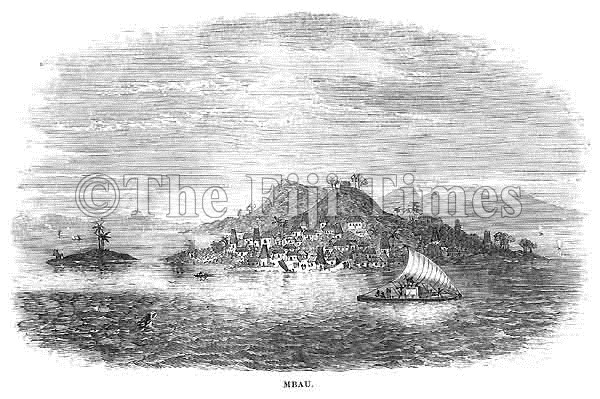The article below is based on a speech made by Governor Sir Ronald Garvey during a special address at the meeting of the Fiji Society in Suva. It appeared in The Fiji Times of October 28, 1957.
The early history of the island now known as Bau, and of the people, who now live there, was brought down through stories recorded long after the events occurred; in the Native Lands Commission records and in various publications including ‘The King and People of Fiji’, by Joseph Waterhouse, who spent 14 years in Fiji from 1849.
Although the stories may vary in detail, there is probably no need to doubt that their broad outlines are acceptable as evidence of history for which there are no primary sources.
It appears that the earliest inhabitants of the island were fishermen called Kai Butoni and Kai Levuka, and that Bau, was known according to Commission records, as Korolevu.
Waterhouse, however, quotes some authorities as referring to the island as Naulunivuaka or the Pig’s Head.
The two social groups were evidently subject to the present inhabitants of Bau who were at that time living on the mainland, and they supplied fish to the mainland people in return for vegetables.
The inhabitants of the island of Bau were the Yavusa Kubuna.
Legend has it that the forefathers of this social group came from Nakauvadra mountain in the province of Ra.
Some came from the mountains and went to Moturiki and there they founded the social group known as the Vusaratu.
They then went to the Tailevu coast and settled at Kubuna.
Others came from the mountains in Ra and having journeyed in Totoya (in Lau) and Tonga they returned to Viti Levu and finally settled at Kaba, forming the social group known as Tui Kaba.
The sacred chief of the Yavusa Kubuna was known as the Roko Tui Bau and he had to be of the Vusaratu group; “the commander in times of war, the great state execution office in times of commotion, and the prime minister of all political departments”, to quote Waterhouse, was the Vunivalu and he has to be of the Tui Kaba group.
The paramount chief of the Kubuna group, which included the Vusaratu and the Tui Kaba, was at that time the Roko Tui Bau.
The yavusa Kubuna, living in the area of Kubuna, found themselves between two powerful states of Verata and Rewa.
These two states originally sprang from the same ancestor , Ratu Vueti, and had temples dedicated to the same god, and Waterhouse considers that the two powers arose through a political division of the state of Verata.
The name ‘Bau’ was the name of the mounds of Vueti at Ucunivania in Verata and gave rise to the name of the state of the Kubuna group.
Bau was, according to Waterhouse, continually at war either with Rewa or Verata and since she held her own, those people who had grievances against either of these states, or fled from them in times of war, came to Bau for protection.
So began the rise of the matanitu or independent state of Bau under the paramount chieftaincy of the Roko Tui Bau and the chieftaincy of the Vunivalu.
In about 1760, the first date in Fijian history, quoted by most authorities but which is evidently only dependent on the doubtful method of calculation by generations, the chiefs moved from the mainland to the island known — from then onward as Bau.



